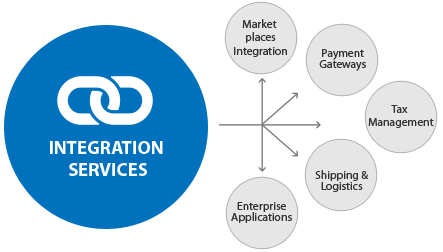
Our services are designed to enable organizations to attain integration maturity for multiple integrations between Enterprise Applications, Partners (Customers, Suppliers, Logistics, etc) and People (Employees, Business Users, etc). Our Integration solutions include ESB, B2B, BPI and Workflows, Composite Applications and Services Oriented Integration.
We also provide Data Integration Solutions that span the spectrum of ETL, Platform Integrations, Unstructured Data Handling and Enterprise Information Integration.
Service Oriented Architecture (SOA) is a flexible set of design principles used for system integration and automation of critical business processes. SOA addresses the challenge of integrating multiple systems that use different languages, network protocols, and data formats. As an architecture, SOA improves business agility, fosters re-usability of application logic and eliminates the boundaries between business domains.

SOA Over the past decade the Service-Oriented Approach to application design has become mainstream, out-pacing all other architectural styles in adoption and user acceptance. SOA generally provides a faster, more cost-effective way for developers to integrate enterperise systems across disparate organizations, allowing internal applications and external users to access busines services through well understood and well defined interfaces.Service Oriented Architecture enables companies to expose critical business functions as reusable components by packaging them into interoperable services that can be used by disparate systems. Composite applications, also referred to asservice-oriented, are built by combining such services into a new application or business process.
It is common for departments within a company to develop and deploy SOA services using different implementation languages and network protocols, using message-oriented middleware to facilitate communication between the loosely-coupled service components.
The Benefits of SOA
From a business perspective, SOA can help organizations respond more quickly and cost-effectively to the changing market conditions and needs of their customers. For developers, service oriented design promotes reuse of business logic at the macro (service component) level rather than micro (classes, function or method) level.
The architectural approach can also simplify interconnection and access to existing (legacy) IT assets. Application developers benefit from SOA by gaining access to re-usable functionality, tapping into existing services to assemble new and unique applications.
Additional SOA benefits:
- »Cost-effective solutions as compared to traditional integration tools
- »Increased business agility allowing easy change management and re-engineering
- »Increased developer productivity as contrasted to custom solutions
- »Improved system metrics, analytics, and compliance reporting